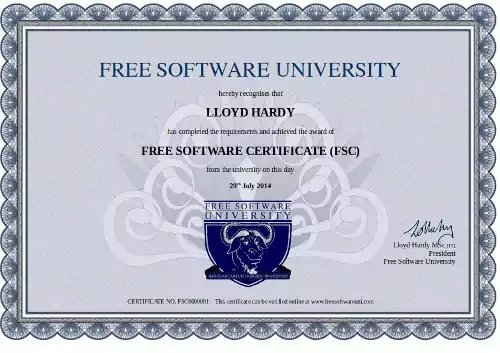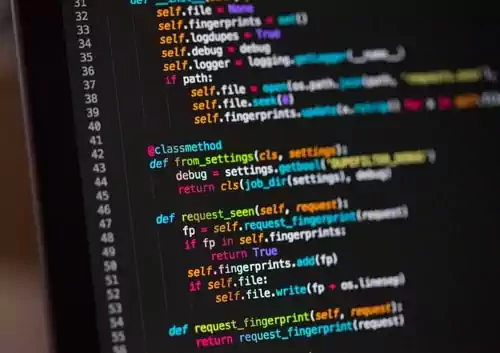Welcome to the Free Software University
Online Learning Environment for Free Software
Free Software refers to Free-as-in-Freedom software and is not related to financial cost. Free Software provides the user/buyer with the freedom to use, study, modify and distribute the software as they wish. In addition, copyleft Free Software requires that the user provides these same freedoms to those which they distribute to.

FSC For Decision Makers
Understanding the responsibilities and opportunities presented by Free and Non-Free Software licenses is crucial to Business Professionals when making a Business Software Acquisition. The wrong decision toward a proprietary license can leave your organisation in a vendor-locked position with a forced upgrade cycle. Understanding Free Software licences allows you to differentiate between the license options available and to make forward-thinking and future-proofed investments in your enterprise software architecture.

Free Software Certificate
The Free Software Certificate is a professional qualification which is presented after a period of study on the Free Software Certificate Course. It certifies that the holder has studied and understood the features of Free Software and the implications of Non-Free Software. Alongside understanding the history and benefits of Free Software, the student will understand the details of Free Software Licenses and be in a position to make informed choice about the type of software license to publish with and the type of license software should be at acquisition.

FSC For Software Authors
If you contribute your time and resources to a software project, it is very important that you consider the license under which that project is provided. If you were to choose a proprietary license, this could mean that the users are unreasonably restricted in their use of your software. If you choose a license which appears to provide freedoms but, under scrutiny doesn't - you could be providing your hard work to support a project which seeks to exploit your contribution to control future users of the software. In the FSC, we explore these licenses and consider new business models which support the development of Free Software, rewarding you for your contribution to science while upholding ethical practices and empowering the wider community.








